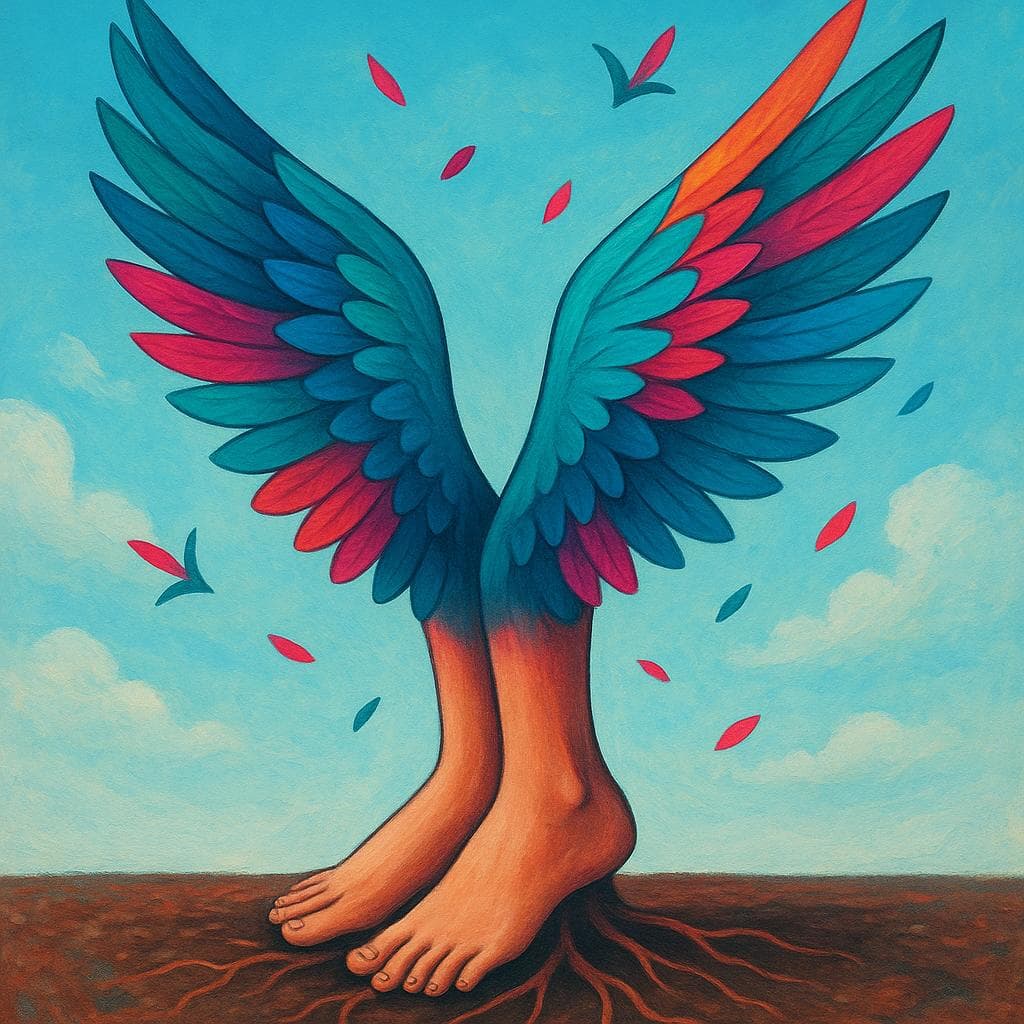"Pies, ¿para qué los quiero si tengo alas para volar?"
/PYEHS, PA-ra kay lohs KYEH-roh see TEN-go AH-lahs PA-ra vo-LAR?/
Feet, what do I need them for if I have wings to fly?
💡 Understanding the Quote
"Pies, ¿para qué los quiero si tengo alas para volar?"
🎨 Visual Representation

Frida Kahlo's famous quote celebrates the power of the human spirit to soar above physical pain.
🔑 Key Words
📖 Context
This quote is famously attributed to the Mexican artist Frida Kahlo. It is believed she wrote it in her diary in 1953, shortly after her right leg was amputated below the knee, reflecting her defiant resilience in the face of immense physical suffering.
📝 In Action
Cuando me siento limitada, recuerdo la frase de Frida Kahlo: 'Pies, ¿para qué los quiero si tengo alas para volar?'. Me inspira a usar mi creatividad.
B2When I feel limited, I remember Frida Kahlo's phrase: 'Feet, what do I need them for if I have wings to fly?'. It inspires me to use my creativity.
Esa camiseta tiene mi cita favorita de Frida: 'Tengo alas para volar'.
B1That t-shirt has my favorite quote from Frida: 'I have wings to fly'.
✍️ About the Author
📜 Historical Context
Frida Kahlo lived with chronic pain following a horrific bus accident at age 18. This quote is believed to come from her diary after her leg was amputated in 1953, a year before her death. It's not just a poetic phrase; it's a defiant statement from a woman who used her art and imagination ('alas' or wings) as a powerful escape and form of expression when her body ('pies' or feet) failed her.
🌍 Cultural Significance
This quote has become an international symbol of resilience, feminism, and artistic freedom. It encapsulates Frida Kahlo's spirit and has transformed her into a cultural icon. You'll see it everywhere—on art prints, t-shirts, and social media—as a motto for overcoming adversity and celebrating the power of the inner self.
📚 Literary Analysis
The quote's power comes from a simple but profound metaphor. 'Pies' (feet) represent our physical, earthly limitations and constraints. 'Alas para volar' (wings to fly) symbolize the boundless freedom of our imagination, creativity, spirit, and mind. By questioning the need for the former when she possesses the latter, Kahlo makes a powerful choice to define herself by her inner world, not her physical one.
⭐ Usage Tips
For Expressing Resilience
Use this quote to convey a message of overcoming adversity, finding strength in creativity, or choosing to focus on what you can do instead of what you can't. It's deeply inspiring and instantly understood.
A Symbol of Frida
Referencing this quote immediately connects your thought to Frida Kahlo's legacy of strength, art, and defiance. It's perfect for discussions about art, feminism, overcoming pain, or Mexican culture.
🔗 Related Quotes
✏️ Quick Practice
💡 Quick Quiz: Pies, ¿para qué los quiero si tengo alas para volar?
Question 1 of 2
Who is famously credited with the quote 'Pies, ¿para qué los quiero si tengo alas para volar?'?
🏷️ Categories
Themes:
Frequently Asked Questions
Did Frida Kahlo really say this?
It is widely attributed to her and believed to have been written in her personal diary near the end of her life, after her leg was amputated. While direct proof from diaries can be complex, the quote perfectly encapsulates her defiant spirit and philosophy, which is why it's so closely associated with her.
Why is this quote so popular?
Its popularity comes from its universal message of hope and resilience, combined with the powerful, tragic, and inspiring life story of Frida Kahlo. It's a beautiful and defiant testament to finding freedom even when physically confined.